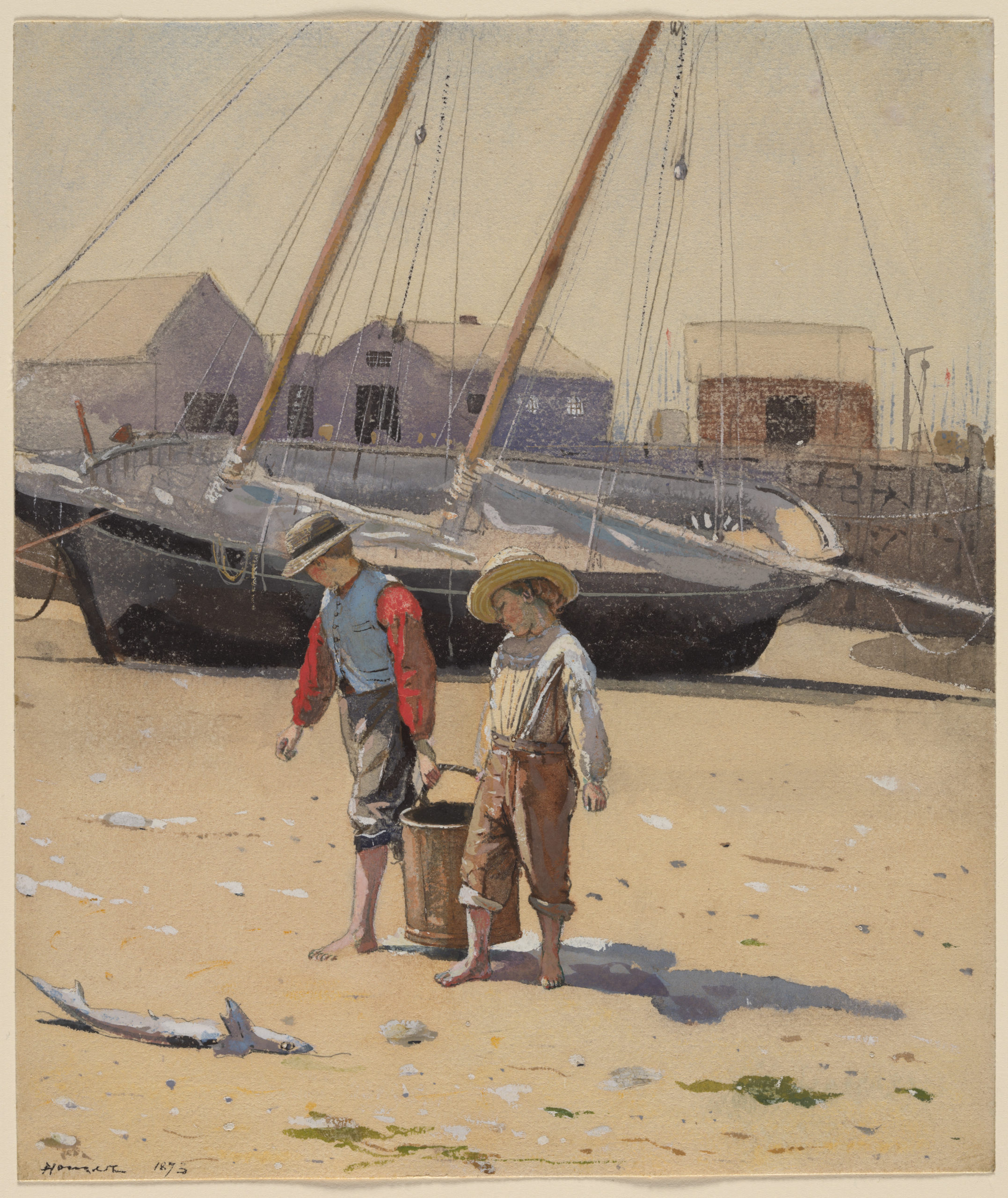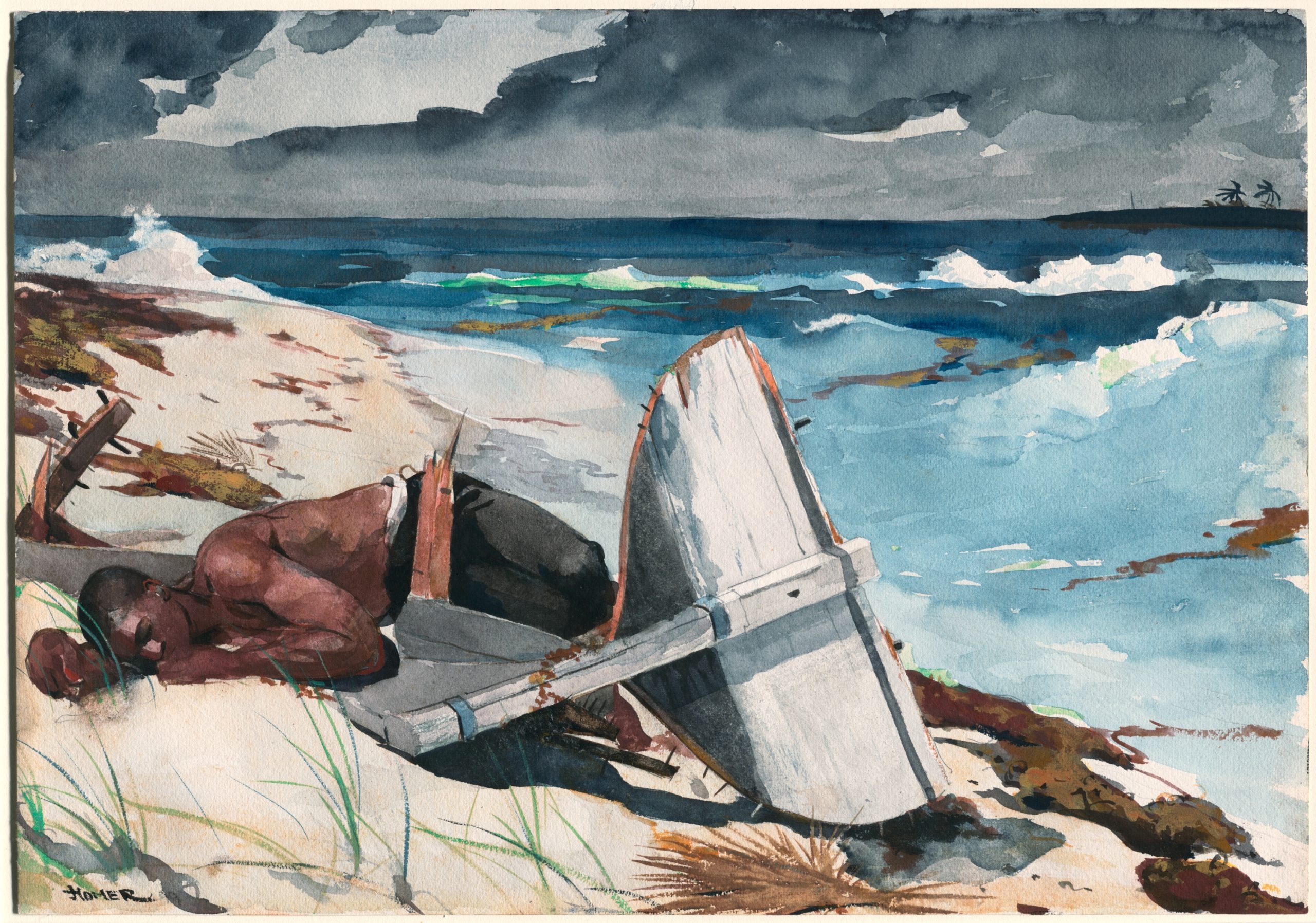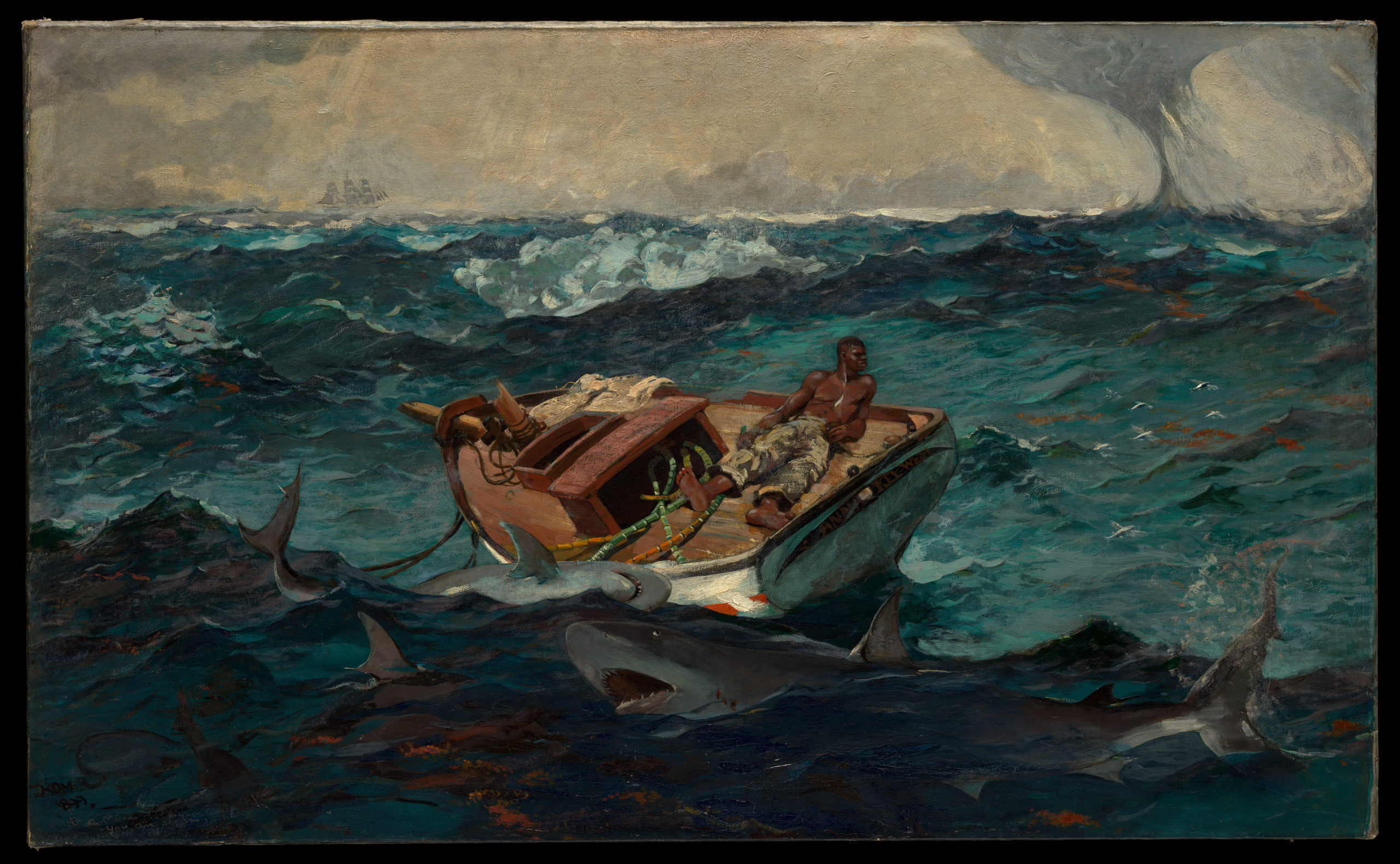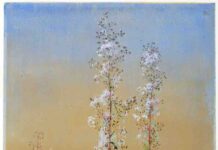
The Metropolitan Museum of Art, Gift of Arthur G. Altschul, 1995
One of America’s most beloved artists, Winslow Homer has inspired and moved generations. But it appears he has more to offer.
From The Metropolitan Museum of Art: Winslow Homer: Crosscurrents, an exhibition on display through July 31, 2022, at The Metropolitan Museum of Art, reconsiders the artist’s work through the lens of conflict, a theme that spans his prolific career — from emblematic images of the Civil War and Reconstruction that examine the effects of the conflict on the landscape, soldiers, and formerly enslaved people to dramatic scenes of rescue and hunting, as well as monumental seascapes and dazzling tropical works painted throughout the Atlantic world.
The centerpiece of the exhibition is The Met’s iconic The Gulf Stream, a painting that reveals Homer’s lifelong engagement with the charged subjects of race, geopolitics, and nature. Featuring a number of watercolors, this exhibition represents the largest critical overview of Homer’s art and life in more than a quarter of a century.
“By focusing on the theme of conflict across his art, this exhibition will raise timely questions about his significance and appeal, encouraging a fresh understanding of his deeply thoughtful approach to depicting complex social and political issues of his era—many of which remain pertinent today,” says Max Hollein, the Museum’s Marina Kellen French Director.
WINSLOW HOMER’S JOURNEY TO A MASTERPIECE
At the start of his professional career, Homer worked as a “special artist” documenting the American Civil War (1861–65) for Harper’s Weekly. The artist probed the war’s emotional and physical impact on the soldiers and landscape in a haunting series of paintings. After the war, while maintaining a studio in New York City, Homer followed travelers to resorts throughout the northeastern United States, where many sought the restorative power of nature to assuage the pain of war and as an antidote to rapid urbanization. The exhibition will present Homer’s early images of the seashore as a site of both leisure and labor during this time, while also revealing his burgeoning engagement with watercolor.
Seemingly lighthearted images like A Basket of Clams (above; 1873; The Met) intimate darker themes and foreshadow the artist’s later seascapes depicting the dangers of maritime life. In this image, one of the earliest watercolor paintings by the artist in The Met collection, Homer depicts two boys lugging their haul across the beach. The smaller figure appears to eye the dead shark ahead, while his older companion looks back, seemingly at the sailboat behind them. These two details — the shark and the ship — cast a shadow on an otherwise bright scene, subtly gesturing to threats the youth of this fishing village might someday face at sea.
To escape the harsh winters at his home in Prouts Neck, Maine, Homer traveled to tropical destinations, including the Bahamas, Cuba, Florida, and Bermuda, where he painted a number of watercolors. Contemporary critics often dismissed these watercolors as simple touristic souvenirs, but the Crosscurrents exhibition highlights the significance of these works, which hint at complicated histories, geopolitics, imperial landscapes, and the threat of nature. For example, the aftermath of inclement weather in After the Hurricane, Bahamas (1899; The Art Institute of Chicago) diverges from traditional images of an idyllic tropical setting.

Mr. and Mrs. Martin A. Ryerson Collection
This compelling watercolor painting was completed during Homer’s second trip to the Bahamas in the winter of 1898–99. Depicting a luckless man washed up on the beach, surrounded by fragments of his shattered craft, the work demonstrates the artist’s fascination with the rapid and dangerous weather changes of the region. Here sunlight glints through gradually thinning storm clouds. Homer employed thickly applied opaque red and yellow pigments for the seaweed tossed on the sand, creating a contrast with the thin washes and fluid brushstrokes that he used to render the receding waves.
Homer’s travels to the Bahamas and Cuba inspired The Gulf Stream, a monumental scene of conflict between humankind and nature. It is considered among Homer’s most consequential works and is notably one of his first paintings to enter The Met collection. The ambitious oil depicts a lone Black seaman confronting devastating obstacles from the deck of a small, dismasted boat, threatened by sharks and a waterspout along the powerful Atlantic current.

The Metropolitan Museum of Art, New York, Catharine Lorillard Wolfe Collection, Wolfe Fund, 1906
Interpreted by some as Homer’s rumination on mortality after the death of his father, The Gulf Stream also alludes to the legacies of slavery and American imperialism as well as more universal concerns about the fragility of human life and the dominance of nature. A section of the exhibition devoted to the development of this important painting — a process that took place over more than 20 years — will include a rare graphite sketch acquired by The Met in 2016 in addition to several related watercolors.
For more inspiring stories like this one, sign up for INSIDEART, the free daily e-newsletter.







